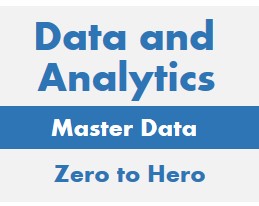


In this part of the Data and Analytics Tutorial we will discuss:
Data Analytics is a broad architecture for collecting, storing, and utilizing data for the enterprise. It includes Contemporary Data Architecture elements including: Data Pipelines, Data Lakes, Atomic Warehoues, Dimensional Warehouses, Business Intelligence and Data Science.
Business Intelligence (BI) is the practice of supporting decision making through the presentation and analysis of data. BI supports analytical processes such as: customer segmentation, product mix analysis, budgeting, and operations improvements. Techniques and tools associated with BI including data mining, dashboards, statistical analysis and regression modeling.
The article titled Business Intelligence and the Data Warehouse provides further information about BI. Data is the needed raw material for material for BI and that is where Data Warehousing comes into play.
Data Warehousing is a total architecture for collecting, storing, and delivering decision support data for an entire enterprise. Data warehousing is a subset of Data Analytics and is described point by point in this series of tutorials.
William (Bill) H. Inmon has provided an alternate and useful definition, “A data warehouse is a subject-oriented, integrated, time-variant, and nonvolatile collection of data in support of management’s decision-making process.”
As a total architecture it includes people, processes and technologies to achieve its goal which is to provide decision support data that is:
Data warehousing and business intelligence efforts improve decision making which in turn provides numerous benefits including:
Decisions can impact the bottom line by reducing cost and increasing revenues. Costs may be reduced by:
Revenues may be increased by:
The analytic data stored in the data warehouse is different from operational data. Operational data is:
In contrast, data warehouse / analytical data is:
High quality data has the following characteristics:
See our article Data Sources for Data Warehousing and Business Intelligence to learn how to assess and improve the quality of data.
The Decision Support function typically has the following goals:
These decisions can support a number of stakeholders
Let's make clear what a data warehouse is and is not. A data warehouse is:
A data warehouse is not:
Infogoal.com is organized to help you gain mastery.
Examples may be simplified to facilitate learning.
Content is reviewed for errors but is not warranted to be 100% correct.
In order to use this site, you must read and agree to the
terms of use, privacy policy and cookie policy.
Copyright 2006-2020 by Infogoal, LLC. All Rights Reserved.
